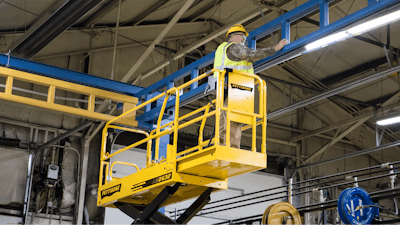
We have arrived. The new ANSI standards for mobile elevating work platforms (MEWPs) have gone into effect, scissor lift technology has been or is being tweaked to adapt, and everybody is ready to play by the new set of rules – or, at least, they’ll need to be ready soon and going forward.
With the new guidelines in place, the industry is taking another solid step toward improving performance and overall safety. The standards have also added the necessary structure to better identify where responsibility lies with regard to equipment design, safe use, and training requirements.
Manufacturers Take the Lead
It all begins with the OEMs, some of whom have already been producing ANSI A92-compliant machines for over a year, putting them ahead of the game with regard to testing and implementation. Since everybody has to meet the same requirements, users may notice similar new functionality across different brands; however, each manufacturer will naturally have a different way of meeting design compliance.
For example, models for indoor or outdoor use must be clearly marked. Some indoor scissor lifts on the market, however, include a function that will limit the platform height in the event a user wants to bring it outdoors. Other OEMs prefer to stick strictly to separate indoor and outdoor work height offerings.
Chains can no longer be used as doors, with self-closing, self-catching entry gates becoming the new standard. Rail guards and toe guards must now be higher as well, which is forcing more scissor lift rails to have fold-down features to fit through doorways. However, some units are still compact and low enough to not need a fold-down component.
Automatic Shutdown
The biggest changes that equipment operators will experience relate to load and machine tilting restrictions that will completely stop the machine from functioning. Most OEMs have introduced load sensing systems that use a hydraulic pressure transducer. Based on the machine’s rated weight capacity and corresponding pressure range, a scissor lift will cease all functions if the weight limit is exceeded.
Therefore, users must be cognizant not only of their original load – including personnel and tools on the platform – but also any materials that might be added during the course of a project. So, if two workers and a toolbox alone are near the weight limit, the sheet of plywood they remove from a wall could very well put them overweight and shut down the lift.
To help avoid tipping over, scissor lift tilt ratings have been established. For Pettibone machines, those limits are set at 3° for front and back incline or decline, and 1.5° for left to right tilting. If those tilt levels are exceeded, the machine will automatically cut out. This means that even something like driving over a board while positioning the unit could potentially trigger the tilt sensor and stop the machine. And for jobsites with abundant slopes and curves, it means that selecting a rough terrain model, rather than a slab scissor lift, is practically a must.
Training More Important Than Ever
The ANSI A92 standards also make it imperative that OEMs, dealers, and rental owners educate customers about why these safety measures exist and how their experience with using scissor lifts is about to change. Along those lines, proper staff training will become more critical.
All operators will have to go through a certified training course for MEWPs, but there is also a new familiarization aspect where supervisors or other personnel on the ground will need to be available in case of emergency; more specifically, this person must be familiar with the emergency lowering lever so they can get the platform down in case of a malfunction.
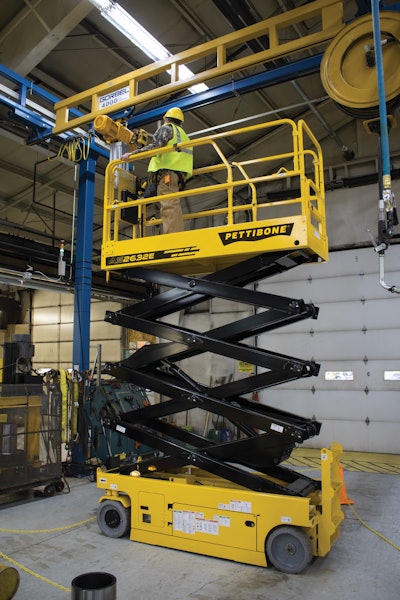 Some indoor scissor lifts on the market include a function that will limit the platform height in the event a user wants to bring it outdoors. Other OEMs prefer to stick strictly to separate indoor and outdoor work height offerings.Pettibone
Some indoor scissor lifts on the market include a function that will limit the platform height in the event a user wants to bring it outdoors. Other OEMs prefer to stick strictly to separate indoor and outdoor work height offerings.Pettibone
Users may also need to anticipate certain conditions, such as wind impacts. For example, even if operating within the 28 mph windspeed rating, a scissor lift could become vulnerable to tipping over if a worker is lifting a sheet of drywall, as that material could suddenly act as a sail.
Don’t Forget Maintenance
Under ANSI A92, scissor lifts must be inspected annually by the owner. Users will also want to do daily pre-start inspections to ensure there is no damage, no missing parts, and no leaks, along with making sure all functions appear to be in working order. Compartment doors should be closed, and manuals should always be in the machine as well.
When maintenance is needed, make sure wheels are chocked to prevent it from rolling. And always keep hands out of the scissor area unless specifically inspecting hydraulic lines or wiring. Be sure to also utilize the safety prop when maintaining or inspecting an elevated unit.
Make sure batteries are in good working condition and topped off with distilled water. When it comes time for replacement, use OEM-approved batteries, keeping in mind that they may also be a component of the machine’s counterweight, which contributes to overall balance and stability.
The good news for operators is that most OEMs have done a great job of meeting these standards with adjustments that are pretty intuitive. Still, those in the market looking to rent or purchase equipment should give the new standards ample consideration on the front end. The days of simply asking, “How high does it go?” are over, but through some basic examination of both machine specs and intended jobsite environment, operators shouldn’t have any trouble selecting and safely using the scissor lifts of the future.
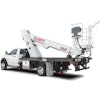
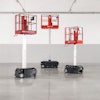

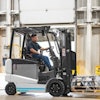
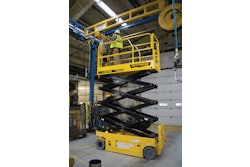















![Building Angled Sm Edit 6050b8d213f1b[1]](https://img.forconstructionpros.com/mindful/acbm/workspaces/default/uploads/2025/09/building-angled-sm-edit6050b8d213f1b1.Ygq5aAos3b.png?ar=16%3A9&auto=format%2Ccompress&crop=focalpoint&fit=crop&fp-x=0.53&fp-y=0.23&fp-z=2&h=135&q=70&w=240)